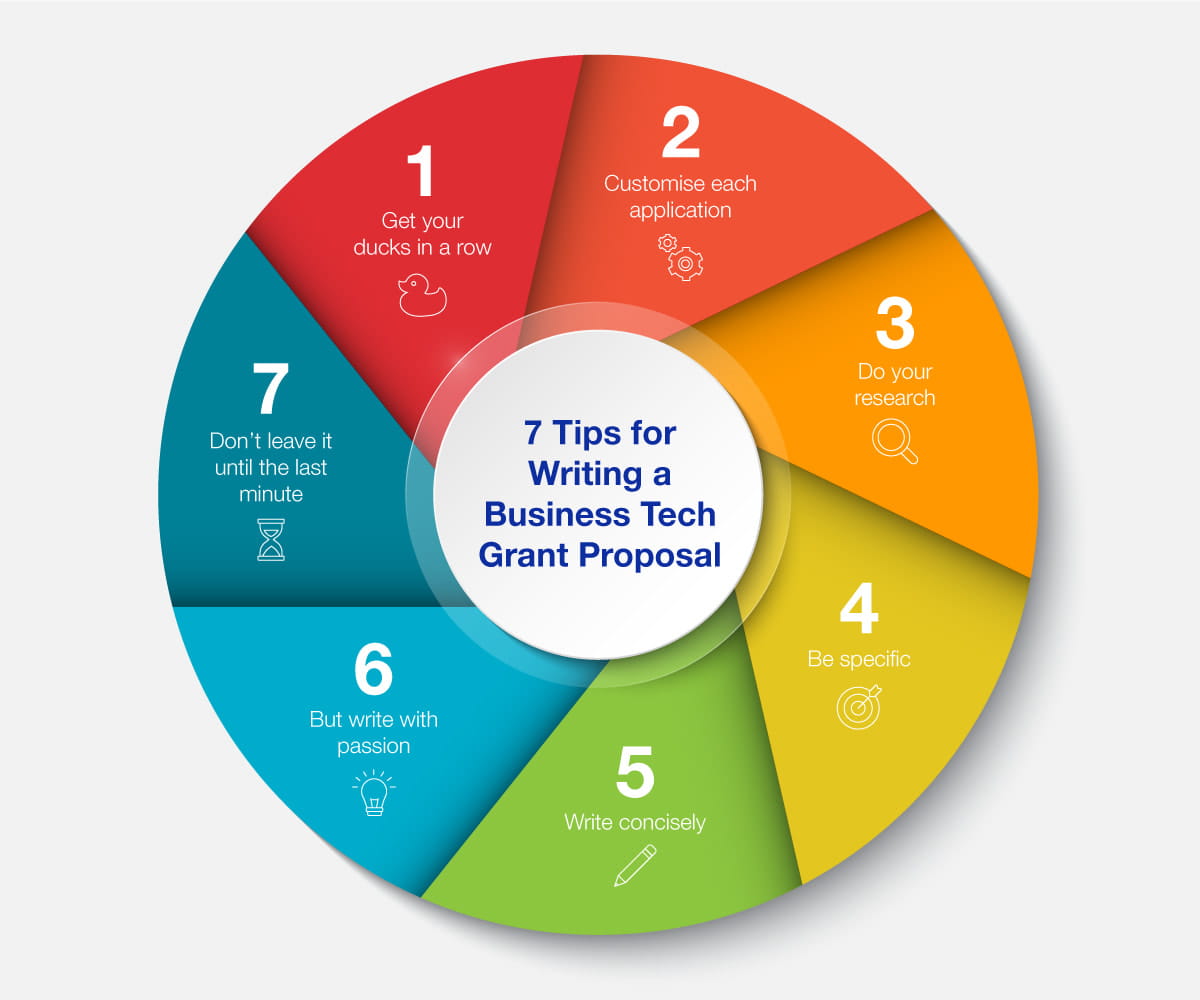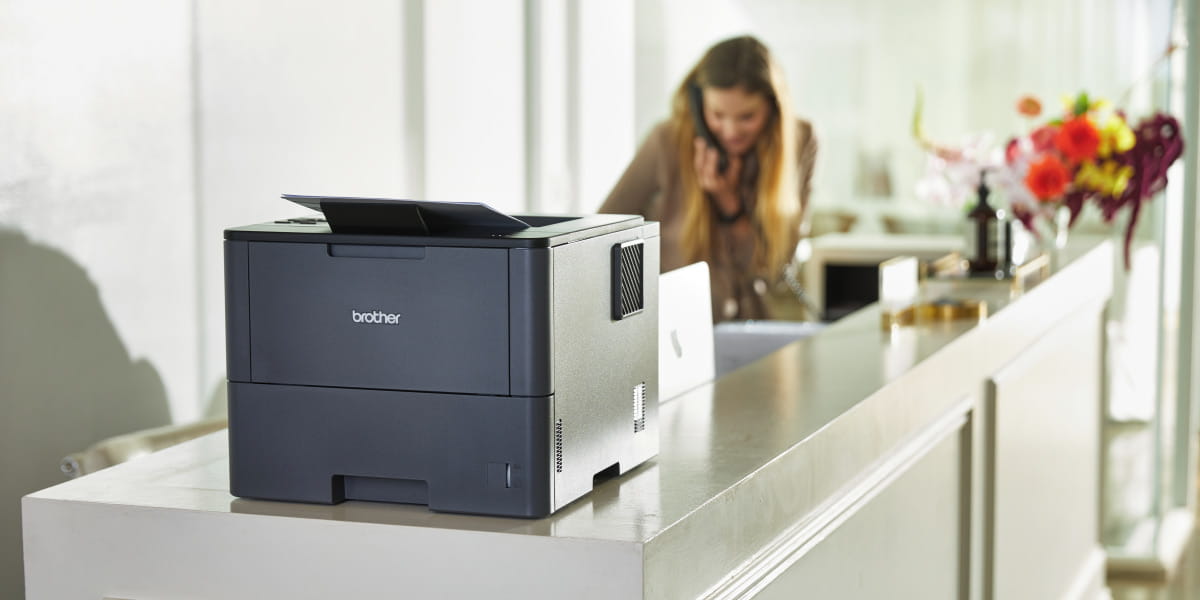
Small business grants for technology

It's businesses that invest in technology and innovation that stay ahead of the curve, enjoying increased efficiency and productivity, and staying relevant as consumer demands shift.
Innovation in startups and small businesses are a boon to the economy, creating jobs and benefiting communities - so it's something governments and large organisations want to encourage.
In Australia, there are hundreds of schemes and programs offering grant funding for startups and small-to-medium enterprises (SMEs), with many angled towards tech.
Here, we explore some of the grants available and take a look at how businesses can secure grant funding - including seven tips for writing a winning application.
On this page, you'll find:
- What is a small business technology grant?
- Types of technology grants available in Australia
- Government grants
- State government grants
- What are the benefits of technology grants?
- What are the drawbacks of technology grants?
- Can my business get funding for innovation?
- 7 tips for writing your business tech grant proposal
- How Brother's tech tools can help
- The final word on technology grants for small businesses
What is a small business technology grant?
A grant is an amount of money given to a business for a specific purpose. In Australia, grants usually come from the state or federal governments, but they can come from organisations, not-for-profits, community groups, or even individual philanthropists.
Crucially, grants don't have to be repaid.
Some grants fund new equipment to boost productivity or conserve energy, while others might cover training in cybersecurity or digital readiness.
Others are designed to encourage research and development (R&D), helping small businesses bring innovative, tech-enabled products to market fast.
Types of technology grants available in Australia
There are two types of grant schemes: those with a limited amount of funding available for a limited number of businesses; and those that are effectively guaranteed for any business that's eligible.
For the latter, any business that can prove eligibility should be able to apply for the funding and receive it.
The former, however, can be competitive. They require businesses to prove eligibility, but they also have to have the best idea, and an application that stands out from the crowd.
Many schemes offer matched funding, meaning the grant will fund a percentage cost of a project (usually 50%). The business must fund the rest themselves, through revenue, a loan or venture capital, for example.
Government grants
These grants are offered by the federal government, and are available for businesses throughout Australia:
CSIRO Kick-Start
The CSIRO Kick-Start program is designed to help small businesses and startups to pursue R&D opportunities. Eligible activities include researching new ideas with commercial potential; and developing and testing new and improved products.
Businesses can access $10,000 to $50,000 in vouchers to pay for CSIRO research and development capabilities. They will also be paired with a researcher or team best suited to the project.
To be eligible, a business must either have annual turnover of less than $1.5 million, or have been trading for less than three years. They must also match the funding.
A business can access this program twice, but not for the same project, and not at the same time.
R&D Tax Incentive
The R&D Tax Incentive is an offset scheme available to any business conducting eligible R&D activity, intended to encourage innovation and business growth.
For businesses with annual turnover of less than $20 million, the refundable tax offset is the corporate tax rate plus 18.5%. That means businesses can claim up to 43.5% of R&D expenses, including software development, automation, engineering and patenting costs.
To be eligible, a business must have spent at least $20,000 on R&D activities.
Energy Efficiency Grants for SMEs
This scheme offers grant funding of between $10,000 and $25,000 to upgrade or replace technology, to improve energy efficiency.
Round one of the scheme has closed, however a second round is expected next year.
This funding is available for businesses with between 1 and 199 employees. Funding is demand-driven and allocated on a first-come, first-served basis.
Small Business Technology Investment Boost
Businesses with annual turnover of less than $5 million may be eligible for an additional 20% tax deduction for expenses helping digitise operations.
This could include investment in technology equipment and systems, digital media, eCommerce and cybersecurity.
Industry Growth Program
In the 2023-24 Federal Budget, the government announced a new $392.4 million Industry Growth Program, aimed at supporting small businesses and startups striving to commercialise innovative ideas.
Full details have not been announced, but the program (which will replace the Entrepreneur's Programme) is expected to include grants and other financial support.
AI and quantum computing
Also announced in the Federal Budget was $101.2 million to help businesses incorporate artificial intelligence and quantum technologies into their operations.
This funding will provide a range of programs and support measures, and while full details haven't been released, it has been confirmed it will include grant funding for small businesses and startups.
State government grants
Some state-specific technology grants for small businesses and startups include:
Victoria
The Made in Victoria Industry R&D Infrastructure Fund offers matched grant funding of between $250,000 and $2 million for investment in R&D infrastructure, encouraging tech innovation in SMEs.
New South Wales
The Farms of the Future Agtech Grant Program offers up to $35,000 in funding to help farmers purchase Agtech equipment, boosting productivity and encouraging sustainable use of resources.
Australian Capital Territory
The Innovation Connect program offers $10,000 to $30,000 in matched grant funding to help startups and entrepreneurs develop innovative products or services.
Queensland
The Manufacturing Hubs Grant Program offers matched funding of between $10,000 and $500,000 for regional SMEs to invest in new manufacturing technology - including advanced robotics.
Northern Territory
Businesses can apply for a $2,500 grant to install charging technology for electric vehicles.
Tasmania
Small businesses in the West Coast region of Tasmania, and affected by the closure of the West Coast Wilderness Railway, can apply for a one-off grant of $5,000 to invest in new technology projects.
South Australia
Seed-Start Grants offer matched funding of between $50,000 and $500,000 for early-stage tech startups to commercialise innovative products and services.
Western Australia
Each year, the New Industries Fund's Innovation Booster Grant program offers up to $40,000 to help businesses commercialise innovative ideas or projects.
What are the benefits of technology grants?
Technology-focused grants can be instrumental in helping a small business or startup get to the next stage of growth - whether that's through investment in R&D, innovation or tech upgrades.
The most obvious benefit is simply cashflow to keep momentum going - buying time for product development.
Improved tech tools can also lead to higher efficiency, productivity and team morale, allowing businesses to hit milestones more quickly, and giving them a competitive advantage.
However, simply going through the grant application process can have benefits, helping business owners solidify their ideas and technology goals, and forcing them to make a plan to achieve them.
Grants for technology and innovation can also bring credibility to a business. This, and the successful technology implementations that follow, can open the door to further funding.
What are the drawbacks of technology grants?
Grants often have incredibly specific and strict eligibility criteria. Some also have certain conditions attached, requiring activities to be completed within a timeframe, for example.
Applying for grants can be time-consuming, requiring a lot of information on the business. It can also take a long time for applications to be processed, and for successful applicants to be paid.
Finally, some grant programs are incredibly competitive. Even if you meet all eligibility criteria and spend hours on your application, there's no guarantee you'll receive any funding.
How can my business get funding for innovation?
The first step to securing grant funding is to find the right program to apply for. Look for the grants that are best suited to your business and your growth goals, and make sure you check the eligibility criteria carefully before you start your application.
Also keep an eye on the closing date for applications, and give yourself plenty of time.
Key resources for startup and small business grants
- This grants and program finder tool from Business.gov.au allows business owners to search and filter available grants, to find options suitable to them
- GrantGuru is a database that is updated daily, offering alerts and application planning tools. This is a paid service, however there is a free trial available
- GrantConnect is another government service, offering information on grants for policy outcomes, including research and innovation
- The Grants Hub is another paid directory, which also offers news, resources and a newsletter. It offers a 14-day free trial
7 tips for writing your business tech grant proposal
Actually writing your grant application can be the trickiest part.
Some businesses hire an agency or advisor to help with submitting their proposal. This can be especially helpful for rebate schemes like the R&D Tax Incentive, which might be subject to an audit at a later date.
However, if you are planning on writing your proposal yourself, here are seven tips to help keep you on track.
1. Get your ducks in a row
Before you start the application, read all the information to figure out what you'll need, including documents, facts and figures. Have everything in one place and ready to go.
2. Customise each application
There's nothing wrong with applying to multiple grant schemes. You may find yourself repeating information, but don't copy and paste your answers word-for-word. Different schemes have different priorities, so maximise your chances by individually tailoring each application.
3. Do your research
To that point, read up on the organisation or government department facilitating the grant to understand what the funding is intended for, and ensure your application ticks all the right boxes. Often you can see previous recipients of the grant, to get a better idea of what decision-makers are looking for.
4. Be specific
Highlight your business goals, and be as specific as you can about how the grant will help you reach them. If you can, include a budget breakdown for the project, showing exactly where the money will be spent.
5. Write concisely
Think about the person wading through hundreds of grant applications, and try to make yours as easy as possible for them to understand. Highlight your key points concisely, and clearly describe your project or plans.
6. But write with passion
At the same time, let your passion for your business shine through. Don't shy away from emotive language - explain why you care about this particular technology implementation, and what the impact could be for your business, customers, employees or community.
7. Don't leave it until the last minute
Grant applications can be lengthy, detailed and time consuming. Leave yourself plenty of time to check your facts, catch any spelling or grammar mistakes, and make sure your application is as strong as it could possibly be.
How Brother's tech tools can help
Brother's range of products and tech tools can help support small businesses both in the grant application process, and in implementing innovative solutions.
A professional desktop scanner like the ADS-4700W, for example, allows you to effortlessly scan documents to be instantly uploaded to the cloud, putting them in one central place ready for digital submission.
Businesses across various industries can maximise the benefits of tech grants by investing in tools to boost productivity, expand services or encourage innovation.
For example, you may be able to use grant funding to purchase portable label printing or mobile scanning technology to facilitate your next phase of growth. Or, small retailers could invest in digitisation tools to improve cybersecurity.
For businesses seeking funding to invest in energy-efficient tech, some Brother monochrome laser printers use less power when compared to their colour laser counterparts. The HL-L6200DW mono laser printer, for example, only uses approximately 6.5 watts when in deep sleep mode.
The final word on technology grants for small businesses
For small businesses and startups, applying for tech and innovation grants can be a significant task.
There's no one program that's right for every business, and no one business model that will succeed every time. But when the right business finds the right scheme, for the right project at the right time, that funding can be game changing.
If business owners get it right, the efforts could be well worth it.
Whether it's helping secure your documents to the cloud or printing labels on the go, Brother has a range of tech solutions for SMEs. Contact us today to learn more about how Brother's solutions can drive your business forward.













